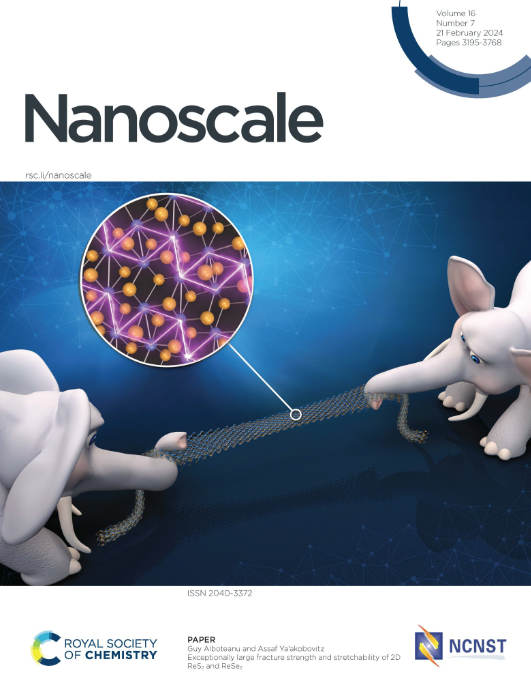Boosting Quantum Efficiency and Suppressing Self-Absorption in CdS Quantum Dots through Interface Engineering
IF 5.8
3区 材料科学
Q1 CHEMISTRY, MULTIDISCIPLINARY
引用次数: 0
Abstract
Applications of photoluminescence from semiconductor quantum dots (QDs) have faced the dichotomy of excitonic emission being susceptible to self-absorption and shallow defects reducing quantum yield (QY) catastrophically and doped emissions sacrificing the tunability of the emission wavelength via quantum size effect, making it extremely challenging, if not impossible, to optimize all desirable properties simultaneously. Here we report a strategy that simultaneously optimizes all desirable photoluminescence (PL) properties in CdS QDs by leveraging interface engineering through the growth of two crystallographic phases, namely wurtzite and zinc blende phases, within individual QDs. These engineered interfaces result in sub-bandgap emissions via ultrafast energy transfer (~780 fs) from band-edge states to interface states protected from surface defects, enhancing stability and prolonging the PL lifetime. This sub-bandgap emission involving the interface states is highly Stokes-shifted, significantly reducing self-absorption while achieving near-ideal quantum efficiencies (>90%); we also achieved extensive emission tunability by controlling the QD size without sacrificing efficiency. Theoretical calculations confirm that the interface states act as planar antennas for an efficient energy transfer from the bandgap states, while the extended nature of these states imparts tunability via quantum confinement effects, underpinning the remarkable optical performance. This interface-engineered approach offers a powerful strategy to overcome limitations in QD-based optoelectronic applications.通过界面工程提高 CdS 量子点的量子效率并抑制自吸收
半导体量子点(QDs)的光致发光应用一直面临着两难的问题:激子发射容易受到自吸收和浅缺陷的影响,严重降低量子产率(QY);而掺杂发射则会通过量子尺寸效应牺牲发射波长的可调性,因此要同时优化所有理想特性即使不是不可能,也是极具挑战性的。在此,我们报告了一种同时优化 CdS QDs 所有理想光致发光(PL)特性的策略,该策略通过在单个 QDs 中生长两种晶体学相(即钨晶相和锌混晶相)来利用界面工程。这些工程界面通过从带边态到受表面缺陷保护的界面态的超快能量转移(约 780 fs)产生亚带隙发射,从而提高了稳定性并延长了聚光寿命。这种涉及界面态的亚带隙发射具有很高的斯托克斯位移,大大降低了自吸收,同时实现了接近理想的量子效率(90%);我们还通过控制 QD 大小实现了广泛的发射可调谐性,而不会牺牲效率。理论计算证实,界面态就像平面天线一样,可以从带隙态进行有效的能量转移,而这些态的扩展性质则通过量子约束效应赋予了可调谐性,从而为显著的光学性能奠定了基础。这种界面工程方法为克服基于 QD 的光电应用中的局限性提供了强有力的策略。
本文章由计算机程序翻译,如有差异,请以英文原文为准。
求助全文
约1分钟内获得全文
求助全文
来源期刊

Nanoscale
CHEMISTRY, MULTIDISCIPLINARY-NANOSCIENCE & NANOTECHNOLOGY
CiteScore
12.10
自引率
3.00%
发文量
1628
审稿时长
1.6 months
期刊介绍:
Nanoscale is a high-impact international journal, publishing high-quality research across nanoscience and nanotechnology. Nanoscale publishes a full mix of research articles on experimental and theoretical work, including reviews, communications, and full papers.Highly interdisciplinary, this journal appeals to scientists, researchers and professionals interested in nanoscience and nanotechnology, quantum materials and quantum technology, including the areas of physics, chemistry, biology, medicine, materials, energy/environment, information technology, detection science, healthcare and drug discovery, and electronics.
 求助内容:
求助内容: 应助结果提醒方式:
应助结果提醒方式:


